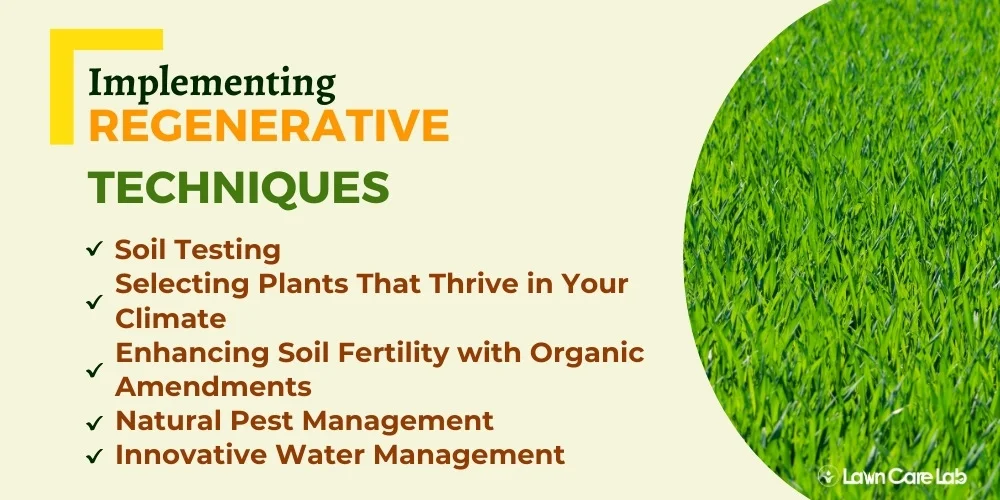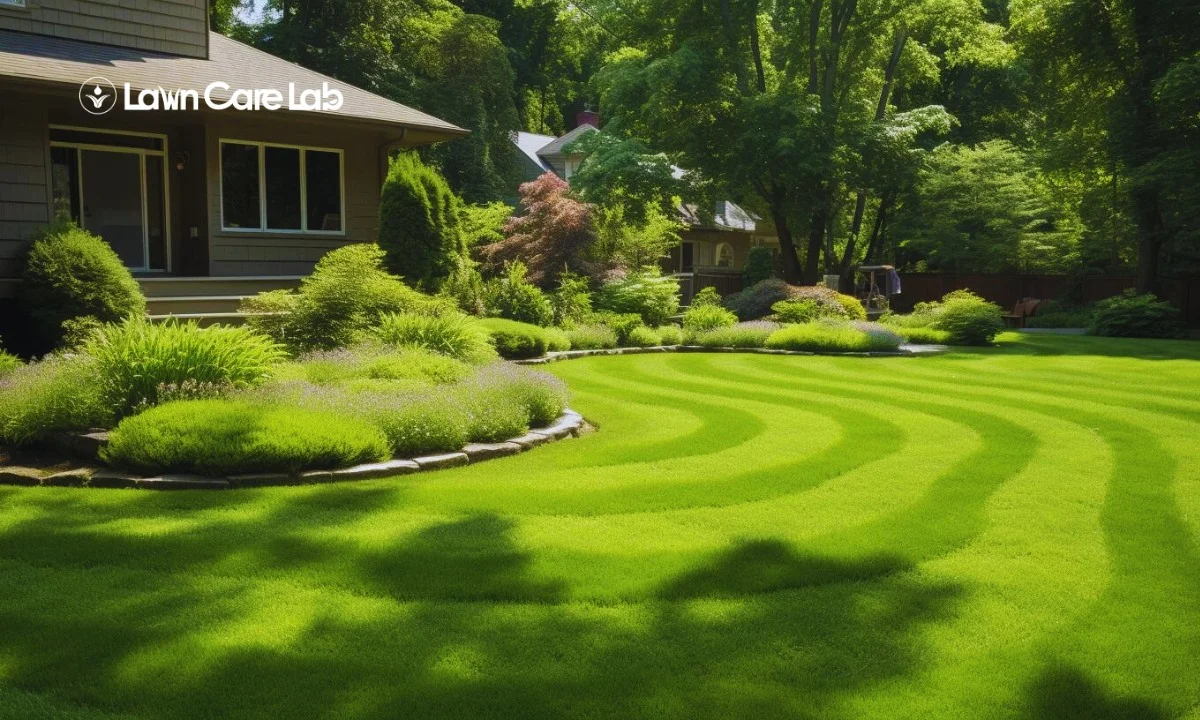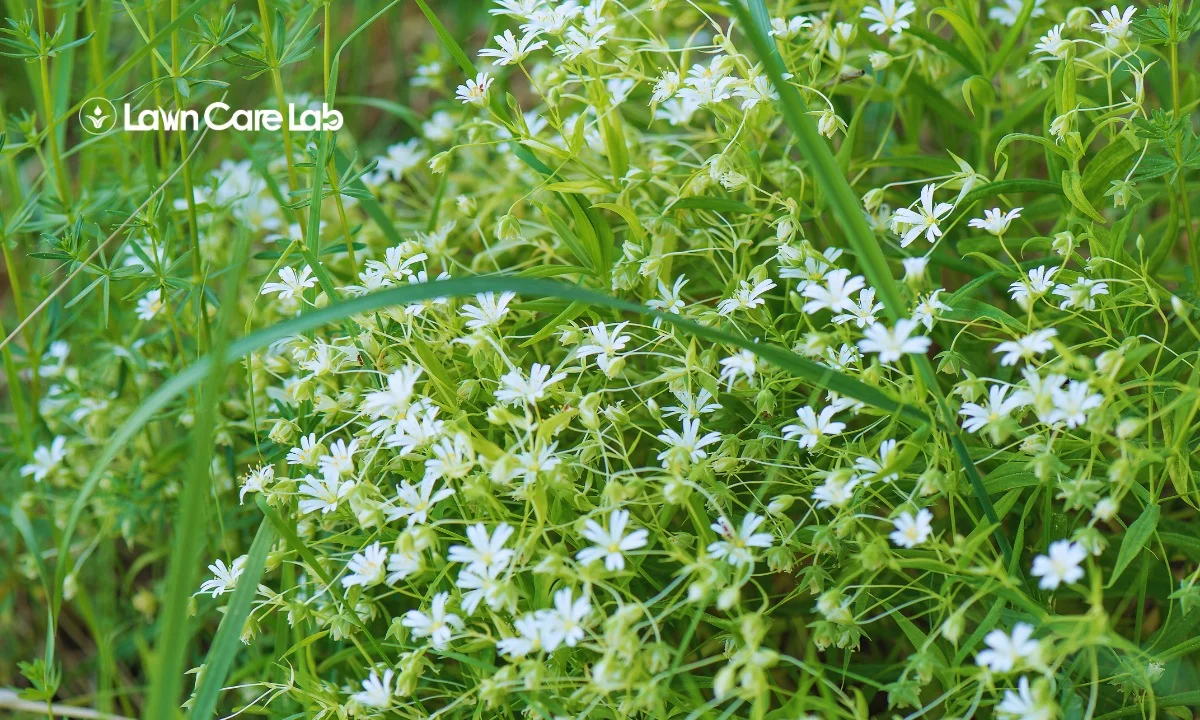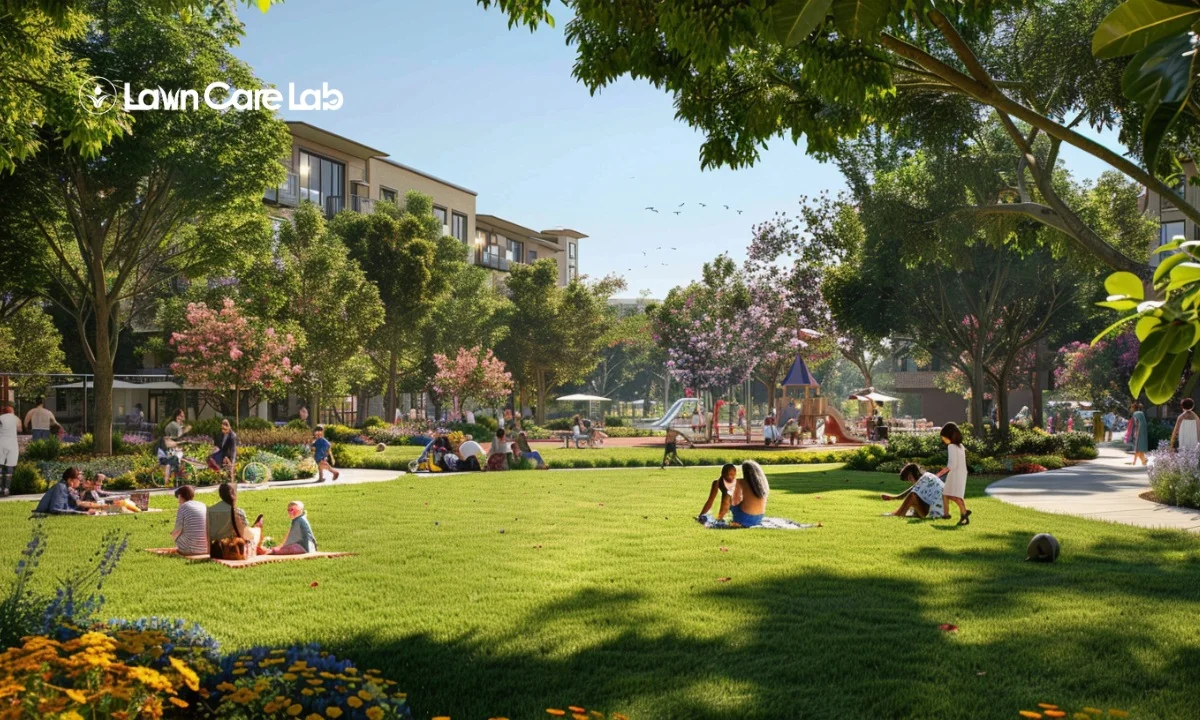Are you passionate about sustainable living? Have you ever thought about the environmental footprint of your lawn? Through regenerative lawn practices, you’re doing more than just maintaining your yard, you’re actively contributing to the earth’s restoration.
This approach goes beyond just having green grass. It involves promoting biodiversity, managing water resources, and benefiting your community. These practices align with your sustainable lifestyle and keep your lawn safe and useful.
Let’s re-envision your yard as a restorative landscape, one blade of grass at a time.
What is Regenerative Lawn Care?

Regenerative lawn care is an approach focused on improving long-term soil health and plant biodiversity to create a self-sustaining, low-maintenance ecosystem requiring less human intervention over time.
It takes a nature-based, holistic approach beyond conventional chemical-dependent gardening techniques.
Core Principles and Practices
Regenerative landscaping concerns soil health, plant diversity, and perennial plants.
Here’s a lucid breakdown:
Nurturing soil health: Adding compost and organic matter and avoiding chemicals builds fertility. This aids carbon sequestration, stimulating underground ecosystems like healthy microbial activity.
Encouraging plant diversity: A diverse mix of native grasses, groundcovers, and flowering perennials invites wildlife, enhances aesthetics, and builds ecological resilience.
Incorporating perennial plants: Deep-rooted wildflowers, shrubs, and trees prevent erosion. Their constant growth provides a habitat for pollinators and beneficial insects.
Reducing interventions: Allowing nature to take its course by reducing chemical use, fertilization, over-watering, and over-mowing. This allows natural cycles to thrive.
By integrating these core aspects, you’ll be able to cultivate a visually appealing lawn that also aids in the restoration of our planet.
Why Choose Regenerative Lawn Practices?

Regenerative practices at home can help mitigate climate change and protect biodiversity through sustainable land management.
Here are a few key points on why choosing regenerative lawn practices can be beneficial:
- Environmental benefits: Sequesters carbon, conserves water, reduces pollution, enhances biodiversity, and controls runoff.
- Healthy habitats: Provides food and nesting resources for birds, butterflies, bees, and other wildlife.
- Visually appealing: Diverse floral mixes and natural landscaping create vibrant, aesthetically pleasing spaces.
- Safe for families: Eliminating synthetic chemicals creates a non-toxic outdoor environment for children and pets.
- Low maintenance: Requires less mowing, watering, and inputs compared to conventional lawns.
- Cost savings: Curbs’ expenses on fertilizers, pesticides, water, and labor over the long term.
The core idea is that opting for regenerative lawn care translates into tangible benefits – for the environment and your own living space and health. It’s a sustainable, eco-friendly choice that pays dividends.
Implementing Regenerative Techniques

Soil Testing
Soil tests are essential for regenerative lawn care. It provides insight into nutrient levels and pH balance for informed decisions. Understanding the roles and symptoms of nutrient deficiencies is key:
- Nitrogen is crucial for vibrant growth, with deficiency manifesting as pale foliage.
- Phosphorus supports the growth of roots and blooms, with lack thereof leading to stunted, discolored leaves.
- Potassium enhances plant resilience, with scarcity leading to weak stems and browning edges.
Armed with this knowledge, you can rapidly nurture your soil, fostering a thriving, resilient garden ecosystem.
Selecting Plants That Thrive in Your Climate
Choosing native plants adapted to your climate is crucial for a thriving garden that supports local biodiversity and ecosystem. Seek guidance from local flora experts or horticulturists for best results.
Enhancing Soil Fertility with Organic Amendments
Incorporating organic amendments like compost into your routine enriches your soil, promotes beneficial microbial activity, and helps build a robust lawn ecosystem. This method enhances soil health and reduces dependence on synthetic inputs, consistent with regenerative gardening.
Natural Pest Management
Adopting organic pest control methods enriches your lawn’s biodiversity, inviting beneficial insects and employing nature’s own defense mechanisms. This strategy reduces chemical usage, supporting a healthier environment.
Innovative Water Management
Efficient water management is key in regenerative lawns. Drip irrigation, rainwater harvesting, smart watering schedules, and mulching can help save water, promote plant health, and enrich the soil.
Here are some strategies to consider:
| Strategy | Advantage |
|---|---|
| Drip Irrigation | Channels water right to the plant roots, minimizing waste |
| Rainwater Harvesting | Collects and stores freely available, naturally soft rainwater for use during dry spells |
| Intelligent Watering Timetables | Irrigates plants when evaporation rates are low, optimizing water absorption |
Adopting regenerative lawn care practices contributes to global environmental healing. It conserves water and makes our lawn more resilient.
The Role of Biodiversity in Regenerative Lawns
Biodiversity holds a significant position in the realm of regenerative lawn care. By drawing in useful insects and pollinators, you’re cultivating a lively, robust yard and fostering an ecological equilibrium that lessens dependency on chemical solutions.
The integration of native plants in your lawn further bolsters this equilibrium, offering refuge for local fauna and fortifying the broader ecosystem.
Attracting Beneficial Insects and Pollinators
In the pursuit of a thriving, self-sustaining garden, appreciating the importance of biodiversity is key. This principle promotes a robust ecosystem critical in enticing beneficial insects and pollinators.
Let’s discuss some effective ways to boost biodiversity in your garden:
- Cultivate native plants: These species have developed alongside local insect populations and supply the nutrients needed for their survival.
- Steer clear of pesticides: These substances are indiscriminate, often harming both destructive and beneficial insects.
- Establish shelters: A diverse range of plants can provide safe havens and insect breeding grounds.
- Preserve a natural lawn: Encourage some regions to grow freely, providing a potential habitat for various insect species.
Native plants in your garden create a natural habitat for wildlife, demand less water and chemicals, and foster biodiversity. They also make your garden look beautiful.
Implementing these tactics isn’t just about fostering an attractive garden. It’s an opportunity to contribute to an environmentally stable future.
Seasonal Care for a Thriving Regenerative Lawn
A healthy lawn needs proper care throughout the year. Adapting your routine to each season for a sustainable and regenerative lawn that benefits the planet is important.
Here are four season-specific tips to keep in mind:
Spring: Adjust mowing height to stimulate growth. Enhance soil health through amendments.
Summer: Overseed to thicken turf and deter weeds. Conserve water and mulch generously.
Fall: Aerate to improve soil-water-air interaction. Compost leaves for nutrient recycling.
Winter: Implement frost protection strategies like covers. Limit mowing during dormancy.
Seasonal care routines based on scientific research help lawns thrive sustainably by strengthening resilience. It’s about tuning in to nature’s rhythms and promoting ecological restoration. A regenerative lawn becomes an act of environmental stewardship.
Conclusion
The act of adopting regenerative lawn care extends beyond the aesthetics of a well-manicured yard. It’s a proactive step towards being part of a larger, environmentally-conscious solution. Your lawn can transition into a self-sustaining ecosystem by focusing on smart water usage, promoting biodiversity, and adhering to seasonal upkeep.
This isn’t just a boon for your property but a valuable contribution to the wider community. Thus, we’re enhancing our surroundings and actively aiding our environment, one regenerative lawn at a time.
- How to Create a Lawn Care Schedule for Southern Climates - October 30, 2024
- How to Use Compost Tea to Boost Lawn Growth and Soil Health - October 23, 2024
- The Best Grasses for Saltwater-Exposed Lawns: Coastal Lawn Care - October 17, 2024




